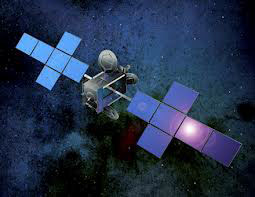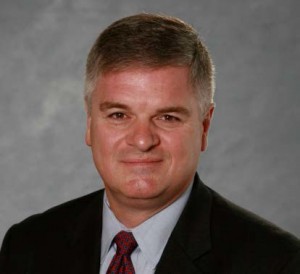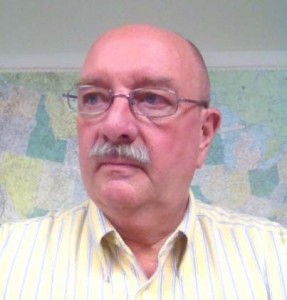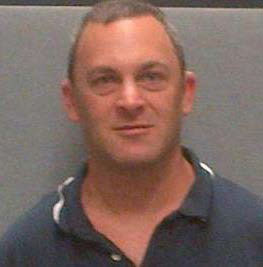SAFECOM Highlights Role of Public-Private Partnerships in Interoperable Emergency Communications
 As part of a joint meeting webinar series presented by the National Council of Statewide Interoperability Coordinators (NCSWIC) and SAFECOM (the emergency communications program of the Department of Homeland Security’s Office of Emergency Communications and Office for Interoperability and Compatibility), the two agencies recently presented the webinar, Public-Private Partnership: Satellite Mutual Aid Radio Talkgroups (SMART) Program.
As part of a joint meeting webinar series presented by the National Council of Statewide Interoperability Coordinators (NCSWIC) and SAFECOM (the emergency communications program of the Department of Homeland Security’s Office of Emergency Communications and Office for Interoperability and Compatibility), the two agencies recently presented the webinar, Public-Private Partnership: Satellite Mutual Aid Radio Talkgroups (SMART) Program.
The SMART program operates on a nationwide two-way radio network owned by private-sector communications company LightSquared. This public-private partnership is the result of an effort to provide critical, interoperable communications, and was spearheaded by the Department of Justice (DOJ) and FBI in 2007.
Though the network is private, the program is administered, managed and monitored by public safety entities at all levels of government. It offers virtual immunity to network congestion and destruction, plus the ability to establish communications in rural and mountainous regions. Currently, LightSquared has signed a letter of commitment to the DOJ Satellite Mutual Aid Radio Talkgroup (J-SMART) promising its customers the use of its satellite technology at least through 2024.
During the webinar, a panel of three SMART program experts discussed their experiences with the technology and the various local, regional and national talkgroups. Jim Corry, former vice president of government solutions and disaster response at LightSquared; Don West, communications director of the Indiana Department of Homeland Security; and Adam Siegel, electronic technician in the Radio Systems Development Unit of the FBI, were all on hand to share their thoughts on a smart model for interoperable communications.
Corry opened the discussion by underscoring the need for audience members to understand the technology, the network and the initial formation of the talkgroups in order to make sense of the SMART program and how it functions.
According to Corry, the current generation of LightSquared technology consists of L-band, audio-acquiring/audio-tracking antennas. The antennas have a 16-channel GPS receiver, a transceiver and a hand-set function that utilizes a geostationary satellite and acts as a telephone or radio with push-to-talk (PTT) capabilities.
The SMART talkgroups primarily use PTT, which allows interoperable communications for up to 16 talkgroups per radio with 10,000 users per talkgroup. Corry outlined the PTT pathway from the base user to the talkgroup, which follows a four-step transmission process:
1) Message is sent to the satellite using an L-band spectrum.
2) Satellite relays the message to LightSquared’s gateway using a Ku-band feeder link. The gateway is where the talkgroup is processed and opened.
3) Gateway sends the message back to the satellite using a reverse Ku-band feeder link.
4) Satellite delivers the message to up to 10,000 units within the coverage area.
This voice communications pathway covers a span of 92,000 miles in 1.92 seconds. LightSquared currently covers the entire continent of North America using an eight-beam configuration.
Current Talkgroups
J-SMART was the first nationwide talkgroup and was established to provide an all-encompassing, interoperable talkgroup to relevant public safety disciplines, tribal entities and the private sector. Since then, a number of nationwide and regional talkgroups have been formed to take advantage of LightSquared’s benefits. SMART-Tactical (SMART-T) is the interoperable talkgroup that serves the FBI and DOJ. Others include the National Fire Service (F-SMART), Public Health (NPHST-1 and NPHST-2), Critical Infrastructure (I-SMART), Emergency Medical Services (E-SMART), Law Enforcement (L-SMART) and Urban Search and Rescue (U-SMART).
There is also a number of overlapping regional talkgroups, such as the Gulf States Regional Talkgroup (G-SMART). All government and public safety entities operating within each of the regions are entitled to regional talkgroup access, regardless of discipline.
Public-Private Partnerships
A key feature of the SMART program’s success is the cooperation of both public and private entities to deliver the needs of clients, provide knowledgeable product support and build true brand loyalty. West convened his portion of the discussion by highlighting a number of user benefits.
According to West, the satellite-based system is superior to other terrestrial systems primarily because it is unaffected by natural disasters. The one-to-many voice communications system works similar to a trunked radio system, with which most users are already familiar. Individual units are powered by either AC/DC or a built-in battery. Users who take advantage of LightSquared’s telephone capabilities receive U.S. phone numbers, unlike many satellite phones that require international calling and commonly charge additional fees.
West, who in addition to his role at DHS is also coordinator for Indiana’s Satellite Communications Program, shared examples from his personal experience using and coordinating other users on the LightSquared network. He said that in order to ensure back-up and redundancy, other Indiana agencies also carry the satellite units. Talkgroup access through a tactical system is shared among internal Indiana agencies housing these units, allowing for contact outside of a regular dispatch system. Several steps were taken to make the partnership affordable and valuable for the state of Indiana, including providing unlimited radio talkgroup use at a cost-effective rate, alternatives for circumventing add-on costs, options for deferring regular costs during periods of decreased use, free access to all SMART talkgroups based on discipline, free deployment coverage and customer advertising.
Satellite Interoperability
Concluding the discussion was Siegel, who explained how communications gaps experienced during large-scale disasters led to the development of the SMART program.
Prior to the landfall of Hurricane Katrina in 2005, the FBI had been utilizing mobile satellite (MSAT) G-2 radios for internal communications in remote areas and mountainous regions. During the storm, the roof of the New Orleans FBI division was torn off and the structure flooded. Responding units had to report to Quantico, Va., where the FBI used satellite radio to communicate locally and support units en route to disaster areas. Although they kept in contact with the New Orleans division, they were unable to contact other agencies due to talkgroup account limitations—highlighting the need for expanded interoperable communications.
According to Siegel, there are now 56 FBI field divisions nationwide, with a minimum of two MSATs per division (more in mountainous regions, remote areas and the Gulf Coast). There is one tactical unit at each division, and 15 total channels may be used in each location to support various local, regional and national talkgroups.
Natural disasters are not the only time when satellite radio has proven useful. Special events such as the Super Bowl, Olympics and national conventions that overload cellular networks are another example of the necessity for a nationwide, interoperable communications network. Fugitive and evidence searches that take place in remote areas also require better communication abilities than land mobile radio (LMR) can provide.
The panel discussion closed by once again stressing the need for government agencies and private entities to work together to encourage the development of relationships and mutual benefits.




